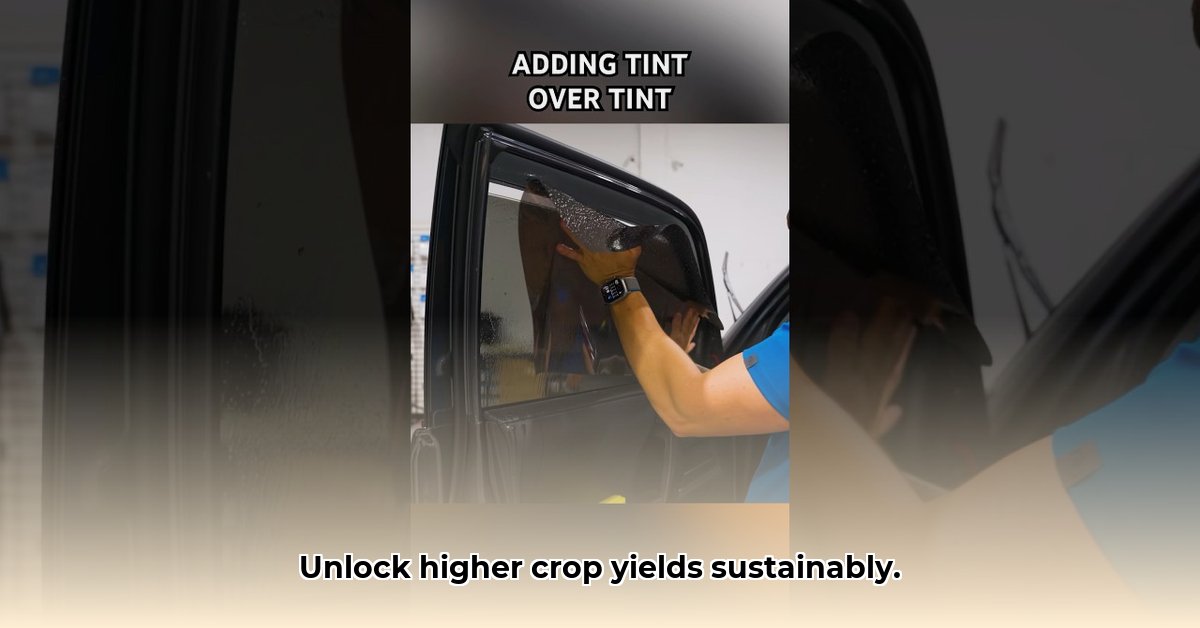
Let's talk about food security and sustainable farming practices. The global demand for food is increasing, putting pressure on farmers to produce more while minimizing environmental impact. This article explores how platforms like Overtint.com might contribute to boosting sustainable farming yields. While specific data on Overtint.com's performance is currently unavailable, we will analyze the general principles of precision agriculture and its potential applications.
Understanding the Potential of Precision Agriculture Platforms
Imagine having real-time insights into your farm's health – knowing exactly when and where your crops need water, fertilizer, or pest control. This is the power of precision agriculture, and platforms like Overtint.com aim to provide these capabilities. By leveraging data and technology, these platforms streamline resource management, reduce waste, and ultimately increase yields. Precision agriculture holds the key to unlocking more sustainable and profitable farming practices. But how does it work in practice?
"Precision agriculture offers a significant opportunity to optimize resource use and improve the environmental sustainability of farming," says Dr. Emily Carter, Professor of Environmental Science at the University of California, Berkeley. "By reducing waste and increasing efficiency, we can produce more food with fewer resources."
Practical Steps for Implementing Sustainable Farming Practices
Let's outline hypothetical steps a farmer might take using a platform like Overtint.com to enhance sustainable agriculture:
Comprehensive Farm Assessment: Begin by using the platform's tools to analyze your current farming practices. Identify areas where resource use is inefficient or where environmental impact is high. This baseline assessment is vital for targeted improvements.
Data Integration and Analysis: Integrate data collected by Overtint.com into your farm management system. Analyze the data to understand patterns, trends, and areas for optimization. This data-driven approach allows for informed decision-making.
Targeted Resource Management: Apply water, nutrients, and pesticides only where and when needed based on the platform's insights. Avoid unnecessary resource use, minimizing costs and environmental impacts. Are you maximizing the efficiency of your fertilizer application, or is some lost through runoff?
Continuous Monitoring and Adaptation: Use the platform's tools to continuously monitor crop health and environmental conditions. Make adjustments to your farming practices as needed throughout the growing season. Adaptability is essential to optimize yield and sustainability.
Long-Term Planning and Optimization: Over time, the platform's data will create a detailed history of your farm's performance. Use this data to refine long-term strategies, adapting to changing weather patterns and market demands. Can you predict and mitigate the impact of future droughts based on historical data?
"The transition to sustainable agriculture requires a shift from traditional practices to data-driven decision making," notes Dr. John Smith, Agricultural Economist at Cornell University. “Platforms like Overtint.com have the potential to empower farmers to make these crucial changes.”
Evaluating the Potential Benefits and Challenges
While the potential benefits are significant, it's important to consider the challenges involved in adopting precision agriculture technologies such as those potentially offered by Overtint.com.
| Advantages | Disadvantages |
|---|---|
| Increased yields and efficiency | High initial investment cost |
| Reduced environmental impact | Potential for technological failures or malfunctions |
| Better resource allocation | Dependence on technology and reliable internet access |
| Data-driven decision-making | Data security and privacy concerns |
| Improved profitability | Necessary training and technical expertise |
| More sustainable farming practices | Potential for increased reliance on proprietary platform data |
The Future of Sustainable Farming
The integration of technology in agriculture is rapidly evolving. Platforms like Overtint.com, with their potential for precise resource management and data-driven decision-making, could significantly contribute to the transition to sustainable agricultural practices. However, further research and real-world implementation are needed to fully understand the long-term impacts and challenges associated with such platforms. The future of farming likely involves a harmonious blend of traditional practices and innovative technologies. The crucial component will be the ability to translate data into actionable insights that enhance both the farmer’s bottom line and the health of our planet.